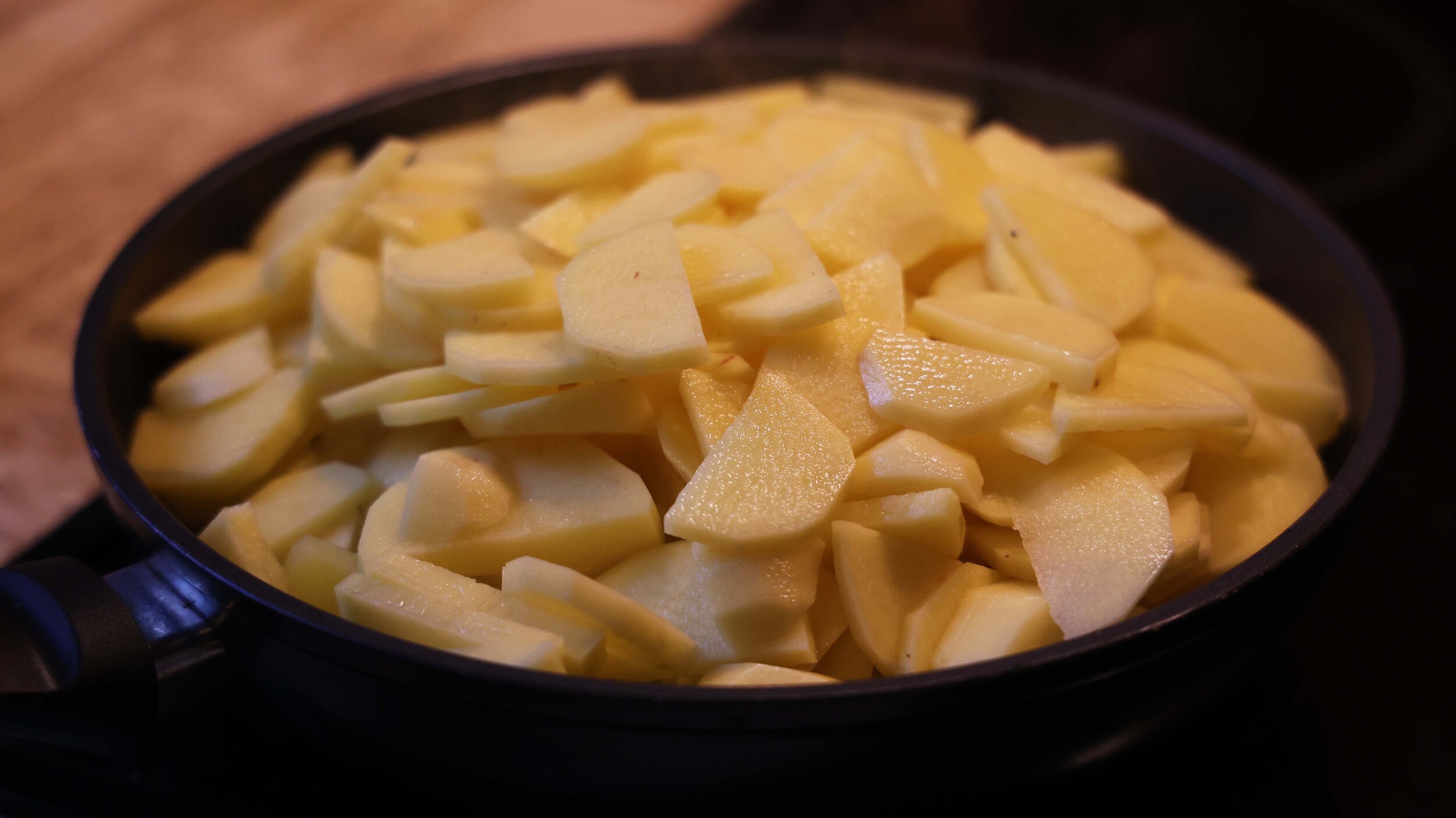Parc Carreg Duck Egg Tortilla
Where to start with a recipe like this? First and foremost, let me give thanks to the three important groups that made it possible. Firstly, Ultracomida, who taught me to make everything Spanish and Tapas related I could possibly imagine. Tortillas are traditionally slimmer than how Paul at Ultracomida makes his, and this one is particularly fat thanks to the depth of the pan I cooked it in. Without the decades of experience behind the family of Ultracomida I could never have learned to make such good Tortillas. Secondly, I’d like to thank Huw for taking me on a day trip to visit the amazing regenerative farm, Parc Carreg, for a day of filming. It’s one of my first visits to a regenerative farm, having visited a few organic farms in the past, and it was a truly eye opening experience. And lastly, Josh, Abi (and Ada) and their amazing team of ducks! But more on them later.
Tortilla or Frittata?
By no means am I an expert on the finer details of such things, but broadly speaking, a tortilla is a Spanish potato omelette, whilst a frittata is Italian. There is quite a big difference in cooking technique too, namely that a tortilla is flipped over half way through the cooking of the egg, whilst a frittata is covered and allowed to cook through one way up. What this means is that a frittata is more cooked throughout, with a firmer texture and a different base to top, whilst a tortilla is kept very hot, sealing the egg on the outside all over, then allowed to stand for 20-30 minutes as the heat from the fried potato gently cooks the egg on the inside. This means a good tortilla has a velvet soft texture to it, with a mild chewiness to the skin alone.
For clarity, a tortilla is also a Mexican wrap, often called a tostada and is made from wheat or corn. The word tostada means ‘toasted’ in Spanish, and confusingly, I used to make the Spanish version for Ultracomida too (what we’d call a toastie or toasted sandwich in English).
Parc Carreg
By far the star of this recipe is Parc Carreg, the regenerative farm that (at the time of writing this recipe) is the UK’s only organic duck egg producer. During our visit we got to film the ducks being let out from their overnight house as Josh explained how ducks, unlike chickens, don’t like their home to be moved around from location to location, so they simply move the temporary duck pools each day to guide the 500 strong team of ducks into areas of the farm where they forage, splash around and act as pest control in the fields and blueberry rows.
For those who may not be familiar with the term ‘regenerative’, it is a holistic approach to farming and land management that follows a lot of the same principles as permaculture. When the world talks about sustainability, regeneration asks ‘why sustain what we currently have when we could restore it to what is was before we came along.” And so each regenerative farm is it’s own unique model, designed around making observations on the land where a particular farm might be. Instead of dividing the land into that which will be intensively farmed as a monocrop and that which will be rewilded for ecosystems, regenerative farming combines both in a way that means more land to support rich and diverse ecosystems and less loss of habitat, whilst also not relying on the continued draining of natural resources elsewhere to keep farms fertile (or the use of fertilizers, pesticides, fungicides or antibiotics) found in industrial farming, that has a devastating knock on effect to the wildlife outside of that farm too. An example of this at Parc Carreg is the jungle of winter squash growing next to the duck house (seen in the photo above). Each year the muck from the house, a combination of duck poo and straw is spread out over the veg garden and covered with a tarp whilst it breaks down. The rich nutrients fertilise the land and the following years crop is planted there.
Along with planting thousands of trees and a mixed variety of flowers and fruiting plants, the diversity of the habitat at the farm is enough to make sure no single pest can take hold enough to overrun the place. In Wales, the biggest issue we face as growers is the dreaded slug, but with a team of ducks on patrol to back up whatever the wildlife misses, they aren’t a problem. Josh and Abi even have plans to build a permanent pond somewhere on the farm for the ducks (and geese) and have spent the last 5 years working out how water naturally moves through their fields in order to work out the best placement for it. The plan from there is to allow the ducks to mucky up the pond water and have a natural draining system to carry that fertile water over the farmland.
As you can see, each regenerative setup is very dependaent on the area. The tricky thing about this is certification. How do you write up guidelines for a farming model that could vary hugely depending on the lay of the land? Whilst others attempt to work this out, I want to show my support for amazing projects like this by writing up recipes that feature their produce as the main ingredient. For Parc Carreg, Josh told me their biggest issue is persuading people how easy it is to use duck eggs instead of chicken, so I have agreed to write a series of recipes to demonstrate this, the first of which being this duck egg and spinach tortilla. Keep an eye out for Josh and Abi’s amazing duck eggs, as well as regenerative farms that may be near you. A lot of these projects are difficult to get setup and there currently isn’t any financial support offered by the government in the way of grants, funding or subsidies as regenerative farming is considered a ‘trial’, and to quote Sarah Stewart, head of communication at Defra's Future Farming Countryside Programme (.gov.uk) when asked directly about support for regenerative farming:
“There are no plans at present to fund trials under the Farm Investment Fund.”
However, there are private companies, such as the search engine Ecosia, who are offering such funding to regenerative projects throughout the EU and UK, making it more and more possible for innovation and restoration from a nature first perspective. Click here to find out more.
Duck Egg and Spinach Tortilla
Serves 6-8
1.2kg Potato, thinly sliced (peeled or not, it’s up to you)
1 Large white onion, diced
6 Duck eggs
A large handful of spinach OR wild garlic, washed and roughly chopped
Cooking oil
Salt
A seasonal side salad
A splash of balsamic vinegar and extra virgin olive oil to dress
Step 1.
Prepare your potatoes by halving them, then cut them into 0.5cm slices. Store them in cold water whilst you prepare the whole batch to stop them discolouring. Dice the onion and place a wide based frying pan on the hob. Add enough oil to cover the base with a 1cm deep layer, then turn the pan on to a high temperature. When the oil is hot, add the onion and two big pinches of salt. In this recipe, the oil and salt are what transform the other ingredients so it is vital to get this right.
Once the onion starts to colour, after a minute or two, drain the potatoes and pile them into the pan. It will look like too much but as they cook it will reduce in size. Most importantly: There is a fine line with tortilla making between over-handling the potato by stirring too much (which will cause it to become oily mash) and not stirring it enough (which will cause the potato to become crispy on the bottom). Whilst a degree of crispiness is desirable, too much will ruin the soft texture of the tortilla and run the risk of burning. I’d say to stir the pan once every 4-5 minutes or so, keeping it on a medium high heat.
The temptation will be to turn it down, but the high heat is essential. If your hob goes up to 10, keep it on 8 or 9. If you notice burning, stir a little more often instead as this will rotate the potato at the bottom of the pan in the oil where the heat is most aggressive and release heat.
Step 2.
I advise you to read all of the following steps whilst your potatoes are cooking, as everything following this stage happens quite quickly.
Crack all 6 duck eggs into a measuring jug and loosely break them up with a fork. Mix to combine but do not whisk. We don’t want to introduce air into the mix as this will give the tortilla a spongy soufflé texture.
After 20-25 minutes the potato should be softened and starting to turn golden in places where the oil has begun crisping the starches. If your potatoes have been thirsty and drank up most of the oil then add a splash more and give it a minute to heat up. Rouhgly chop up the spinach and fold it into the potato mixture. Turn the temperature up to full blast and start tipping the egg in. Do this quickly but accurately, section at a time, whilst using a spatula to open up gaps in the potato to allow the egg to spread amongst it all. Make your way around the outside of the pan first, then pour the remaining mixture into the middle, continuing with the spatula technique to disperse it throughout the tortilla. Do not over handle the tortilla or you’ll end up with scrambled eggs. The moment the egg is in place, put the spatula down. You are forbidden from picking it up again or you’ll be tempted to fiddle.
Step 3.
Keeping the temperature as hot as it will go, gently shaking the pan back and forth to test how the egg is cooking. If there is enough heat and oil, the edge of the tortilla will push up, even rising outside of the pan. Once the whole tortilla slides freely in the pan it is time to flip it (this will only take 1-2 minutes). All the egg on top will still be completely liquid but don’t worry, this is what will form the lovely golden top of our tortilla.
To flip, place a dinner plate over the top of your pan and (if you’re right handed) your left hand on top of the plate. Wrap a tea towel around the handle closely to the body of the pan, this will protect your left wrist from hot oil. Carry the whole lot to a clear worksurface (it’s easier to clean if you have any drips escape the pan), then in one steady movement, hold the plate against the pan firmly and twist the whole lot over anticlockwise. Lift the pan away from the tortilla and place it back on the heat to get ready to cook the top. At this stage the tortilla is very soft so take care, but the cooked skin of the eggs that’s now face up is enough to hold everything together.
Now, in one smooth motion, slide the tortilla back into the pan. This should be done quickly in order to trap the liquid egg beneath the tortilla where it can form a skin against the heat of the pan. If you do it too slowly then it will leave liquid egg behind on the plate that will just drip sadly on top of your cooked half. If the tortilla has caught the edge of the pan or slid in wonky, feel free to gently neaten it up with the spatula, but then put it down again!
Step 4.
After another 2 minutes of cooking on full blast, get a clean plate and repeat the flipping motion as before (leaving the tortilla on the plate). Congratulations, you’ve cooked a tortilla. At this stage the inside is still raw egg, so let it rest whilst the leftover heat in the potato continues to cook the egg for 20-30 minutes. This is how the inside of a good tortilla is velvety soft. If you cook a tortilla too long on the hob then the egg will be rubbery by the time it’s finished.
Serve with a dressed side salad or mayo.









